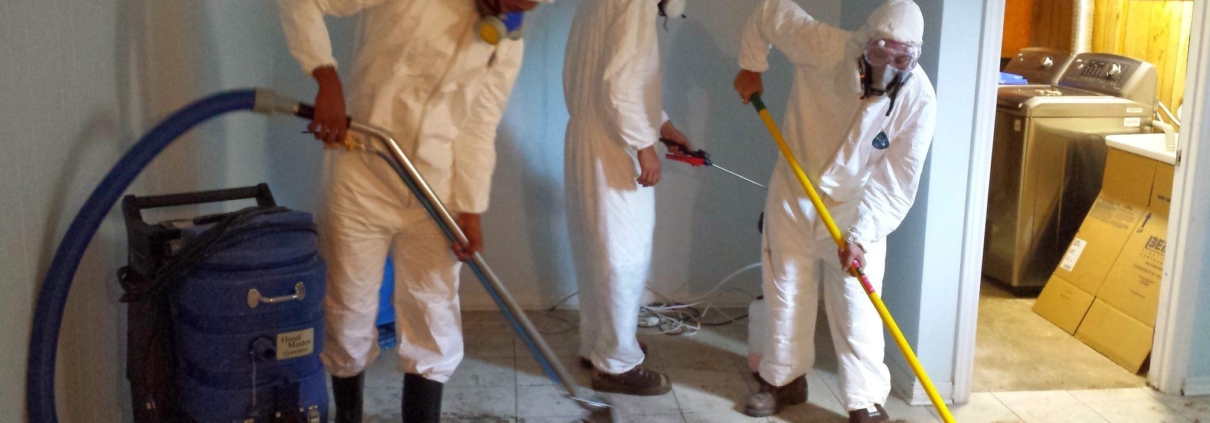How Can Businesses Prevent Future Flood Damage?
Flood damage can cause severe disruptions to businesses, leading to expensive repairs, operational downtime, and lost revenue. For business owners, prevention is always better than recovery. In this article, we explore practical strategies businesses can adopt to reduce the risk of future flooding and protect their assets.
At Ideal Response, we understand the importance of a proactive approach to flood safety. Whether your business is located in flood-prone areas or vulnerable to unexpected water damage, taking preventive steps can save time, money, and stress.
Why Is Flood Prevention Critical for Businesses?
Flood prevention is critical because floods don’t just damage property—they disrupt operations, harm employees, and affect customer trust. Businesses face costs from structural repairs, equipment replacement, and long-term water damage issues.
The process of commercial flood cleanup Burlington and commercial water damage restoration Edmonton is complex and costly. Preventing floods reduces the need for such emergency services and protects your bottom line.
What Are the Key Risks Businesses Face from Flooding?
Businesses face various flood-related risks, including:
- Structural Damage: Floodwater can weaken foundations, walls, and flooring.
- Electrical Hazards: Water can damage wiring and electrical systems, creating fire or shock risks.
- Inventory Loss: Stock and supplies may be ruined by water exposure.
- Business Interruption: Downtime due to repairs can significantly affect revenue.
- Mold and Contamination: Water intrusion can lead to mold growth, which is hazardous and costly to remove.
Understanding these risks is the first step toward developing a flood prevention strategy.
How Can Businesses Assess Flood Risk?
Before implementing preventive measures, businesses must assess their flood risk. This involves:
- Checking Historical Flood Data: Review local flood maps and weather records to determine risk levels.
- Inspecting Building Location and Design: Buildings near rivers, low-lying areas, or with poor drainage are at higher risk.
- Evaluating Drainage and Waterproofing Systems: Identify areas where water could infiltrate the building.
- Assessing Vulnerable Assets: Determine which equipment, inventory, or documents are most susceptible to flood damage.
This risk assessment helps in prioritizing flood prevention measures that are tailored to your business needs.
What Preventive Measures Can Businesses Take Against Flood Damage?
There are many practical strategies businesses can implement to prevent flood damage.
- Invest in Flood Barriers and Waterproofing
Flood barriers, sandbags, and watertight doors can help keep water out during a flood. Waterproof coatings on foundations and walls also offer long-term protection.
- Improve Drainage Systems
Proper drainage around your property is essential. Ensure gutters, storm drains, and downspouts are clean and functional. Installing additional drainage solutions can divert water away from the building.
- Elevate Critical Equipment
Raise electrical systems, servers, and machinery above potential flood levels. This reduces the likelihood of damage and costly downtime.
- Store Inventory Strategically
Keep inventory in elevated or waterproof areas. Use waterproof storage containers for sensitive items and documents.
- Implement Flood-Resistant Landscaping
Landscaping can play a significant role in flood prevention. Sloping land away from buildings and using absorbent plants can reduce water accumulation.
- Maintain a Flood Response Plan
Prepare a flood emergency plan with clear roles, evacuation routes, and steps for protecting property. This should be regularly updated and practiced.
How Can Technology Help Prevent Flood Damage?
Technology can enhance flood prevention efforts significantly. Businesses can use:
- Flood Sensors: Detect early signs of water intrusion and trigger alerts.
- Automated Pump Systems: Remove water before it causes damage.
- Weather Forecast Tools: Predict heavy rainfall and allow for proactive preparation.
- GIS Mapping Software: Analyze flood risk based on location and climate trends.
Integrating technology into your flood prevention plan makes it more effective and responsive.
How Do Businesses Maintain Flood Prevention Measures?
Prevention is not a one-time activity. Businesses must maintain flood protection systems regularly:
- Routine Inspections: Check waterproofing, drainage, and barriers.
- Regular Cleaning: Keep gutters and drains free of debris.
- Testing Emergency Equipment: Ensure pumps and alarms are functional.
- Staff Training: Train employees on flood safety procedures and prevention measures.
By staying proactive, businesses can significantly reduce the need for commercial flood cleanup Burlington and commercial water damage restoration Edmonton services.
What Role Does Professional Help Play in Flood Prevention?
While businesses can implement many preventive measures, professional guidance is invaluable. Flood prevention specialists can:
- Conduct detailed risk assessments.
- Design custom waterproofing solutions.
- Install advanced drainage systems.
- Provide training on flood response.
At Ideal Response, we help businesses not only recover from floods but also create robust prevention strategies that ensure long-term protection.
How Can Businesses Turn Flood Prevention Into a Competitive Advantage?
Flood prevention doesn’t just protect your business—it strengthens your brand. Businesses that demonstrate resilience gain customer trust and stakeholder confidence. Highlighting your commitment to flood safety in marketing materials can position your company as proactive and reliable.
Furthermore, reducing flood risk can lower insurance premiums, freeing up resources for growth and innovation.
Conclusion: Why Businesses Should Invest in Flood Prevention
Floods can be devastating, but they don’t have to be unavoidable. Businesses that prioritize prevention minimize operational disruptions, avoid costly damage, and build resilience. From investing in flood barriers to leveraging technology and engaging professionals, there are many proactive steps to take.
By assessing flood risks, implementing preventive measures, and maintaining flood protection systems, businesses ensure continuity even in the face of severe weather events. This proactive approach means fewer calls to commercial flood cleanup Burlington or commercial water damage restoration Edmonton—saving time, money, and stress.
At Ideal Response, we help businesses transform flood prevention from an afterthought into a core part of their operational strategy. Prevention is not just protection—it’s peace of mind.


Leave a Reply
Want to join the discussion?Feel free to contribute!